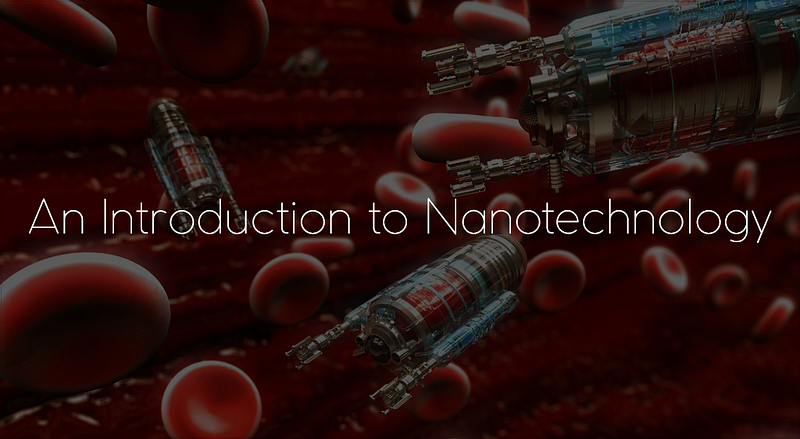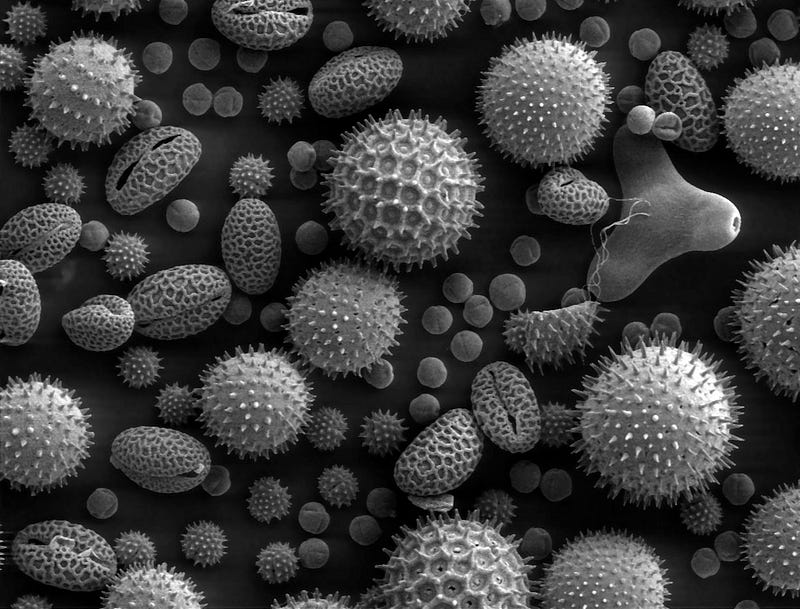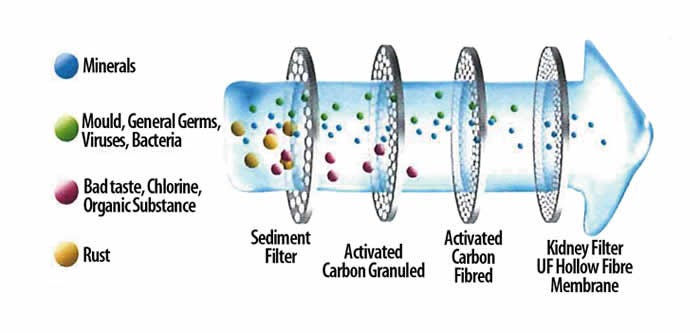Understanding Nanotechnology: A Glimpse Into Our Future
Written on
Chapter 1: The Nanoscale Revolution
Nanotechnology, as the term suggests, revolves around technology that operates at an incredibly small scale, typically between 10 and 100 nanometers. This field involves the design of nanomachines that utilize atoms and small molecules to create innovative applications. The concept of manipulating atoms dates back to the 1950s when physicist Richard Feynman delivered a seminal lecture at Caltech titled "There's Plenty of Room at the Bottom." In this talk, he envisioned a groundbreaking realm ripe for exploration, where machines could be as small as seven atoms in size. To fully grasp nanotechnology, one must delve into the subatomic realm, reminiscent of Ant-Man's journey when he quips, “I’m gonna have to shrink between the molecules to get in there.”

Ready, Set, Go! The Four Phases of Nanotechnology
In 2019, the media landscape was saturated with buzz about cryptocurrencies and AI startups, but news of nanotechnology breakthroughs was sparse. This highlights that we are still in the early stages of this revolutionary field, with numerous milestones ahead (Feynman might have been disheartened by our slow progress). A quick search for "recent advancements in nanotechnology" revealed an article from 2016, underscoring the relative lack of research compared to AI. However, notable achievements are indeed occurring within research laboratories; it is simply unfortunate that nanotechnology remains in its infancy.
The Nanotech Pipeline for the Future:
- Passive Nanostructures: Currently, much of our research focuses here, where we can manipulate molecular structures to create materials with enhanced properties. For instance, companies are developing water-resistant and self-cleaning fabrics by applying nanostructures to various textiles (see Nanex).
- Active Nanostructures: This area is where our research is heading. It involves mobile nanoparticles that play a functional role in materials and objects. Picture nanoscale devices embedded in everyday items, enhancing their performance—like smartphones with improved computational capabilities.

- Nanomachines and Nanosystems: This stage involves self-assembling nanofactories that create complex molecular structures tailored for specific applications. These nanoparticles function collaboratively, like machines or nanorobots, to address significant challenges in healthcare, energy, and more. Experts predict we may be 50 years away from fully realizing this potential.
- Perfect Nanosystems: The ultimate goal is to achieve comprehensive control over nanomachines, allowing precise manufacturing of intricate systems down to the atomic level. Such mastery would usher in a new wave of technological advancements with vast implications.

Three Core Concepts to Comprehend Nanotechnology
Now that we’ve explored various facets of nanotechnology, let’s examine how it operates.
- Grasping the Nanoscale: As a reference, I stand at about 154 cm tall, which translates to roughly 1,540,000,000 nanometers. For context, a human hair is approximately 100,000 nanometers wide, while nanotechnology operates on a scale of 1 to 100 nanometers. All matter consists of atoms, and understanding nanoscale processes is crucial for comprehending the universe around us. At the nanoscale, materials behave differently; for example, carbon, typically soft, becomes incredibly robust when formed into carbon nanotubes. The principles of quantum mechanics govern this domain, where gravity is insignificant and electromagnetic forces dominate.
- Manipulating Nanoscale Objects: Since we cannot physically handle atoms, we rely on electron microscopes to observe and manipulate them. Electrons, with a wavelength of about 1 nanometer, allow us to visualize nanoscale objects far smaller than the wavelength of visible light. By employing electron beams, we can capture images of nanoparticles. Various types of electron microscopes exist, including transmission electron microscopes (TEMs), scanning electron microscopes (SEMs), and scanning tunneling microscopes (STMs).

- Types of Nanosystems:
- Nanomaterials: Carbon nanotubes exemplify nanomaterials with remarkable properties. They are about 10 atoms wide and can be up to 117 times stronger than steel, offering promising potential for future applications.
- Nanochips: These microchips, integral to all electronic devices, utilize nanotechnology to enhance computational capabilities. They enable the miniaturization of transistors, allowing more to be packed into smaller devices like smartphones and laptops.
- Nanomachines: This concept involves constructing nanoscale machines composed of a few molecules, with robotic features. Nanobots could play vital roles in medicine, performing molecular repairs or filtering harmful substances from our environment. Nature already showcases such nanomachines, and through biomimicry, we can create our own.

Nanotechnology's Impact Across Industries
Nanotech is poised to revolutionize numerous sectors, with three major applications outlined below:
- Solar Energy: By modifying quantum dots through nanotechnology, we can enhance the efficiency of solar energy capture. For instance, changing the emitted color of quantum dots could lead to transparent materials capable of generating electricity from sunlight. Researchers are also exploring cost-effective nanoparticles to create hydrogen fuel, enabling solar energy storage even in the absence of sunlight.
- Clean Water: Addressing the challenge of toxin removal from contaminated water sources is crucial. Nanotechnology can facilitate this by tailoring nanoparticles to react with harmful substances, converting them into innocuous products. Additionally, nanofilters can effectively eliminate viruses and bacteria from water, safeguarding public health.

- Cancer Treatment: Nanoparticles offer innovative methods for drug delivery, targeting only cancer cells while sparing healthy ones. Engineered particles can also deliver heat to tumors, with nanotubes that can be activated by infrared lasers to destroy cancerous growths. Furthermore, nanotechnology aids in the early detection of cancer through specialized chips that can identify cancer cells in the bloodstream.
Key Takeaways:
Nanotechnology involves manipulating particles between 1 and 100 nanometers to construct precise systems at the atomic level. We are on the brink of groundbreaking research that could transform various industries over the next few decades. Applications in clean water, solar energy, and cancer treatment are just a few examples of how this technology could solve some of the world's most pressing challenges.
Thank you for taking the time to explore this exciting field! If you found this article informative, feel free to share your feedback, connect with me on LinkedIn, or read more of my work at [my personal website](http://tanishabassan.ca/).
Chapter 2: Exploring the Future of Nanotechnology
In this video titled "The Future of Nanotechnology," experts discuss the potential advancements and implications of nanotech in various fields, highlighting its transformative capabilities.
"Nanotechnology Expert Explains One Concept in 5 Levels of Difficulty" offers an engaging exploration of nanotech, breaking down complex ideas into understandable segments for all audiences.